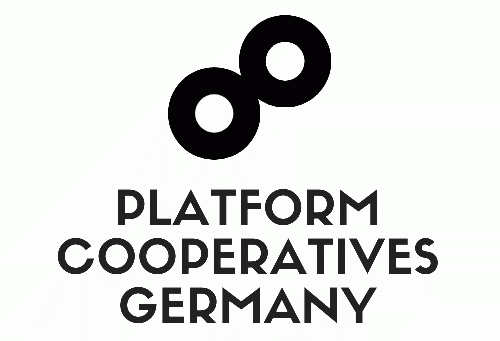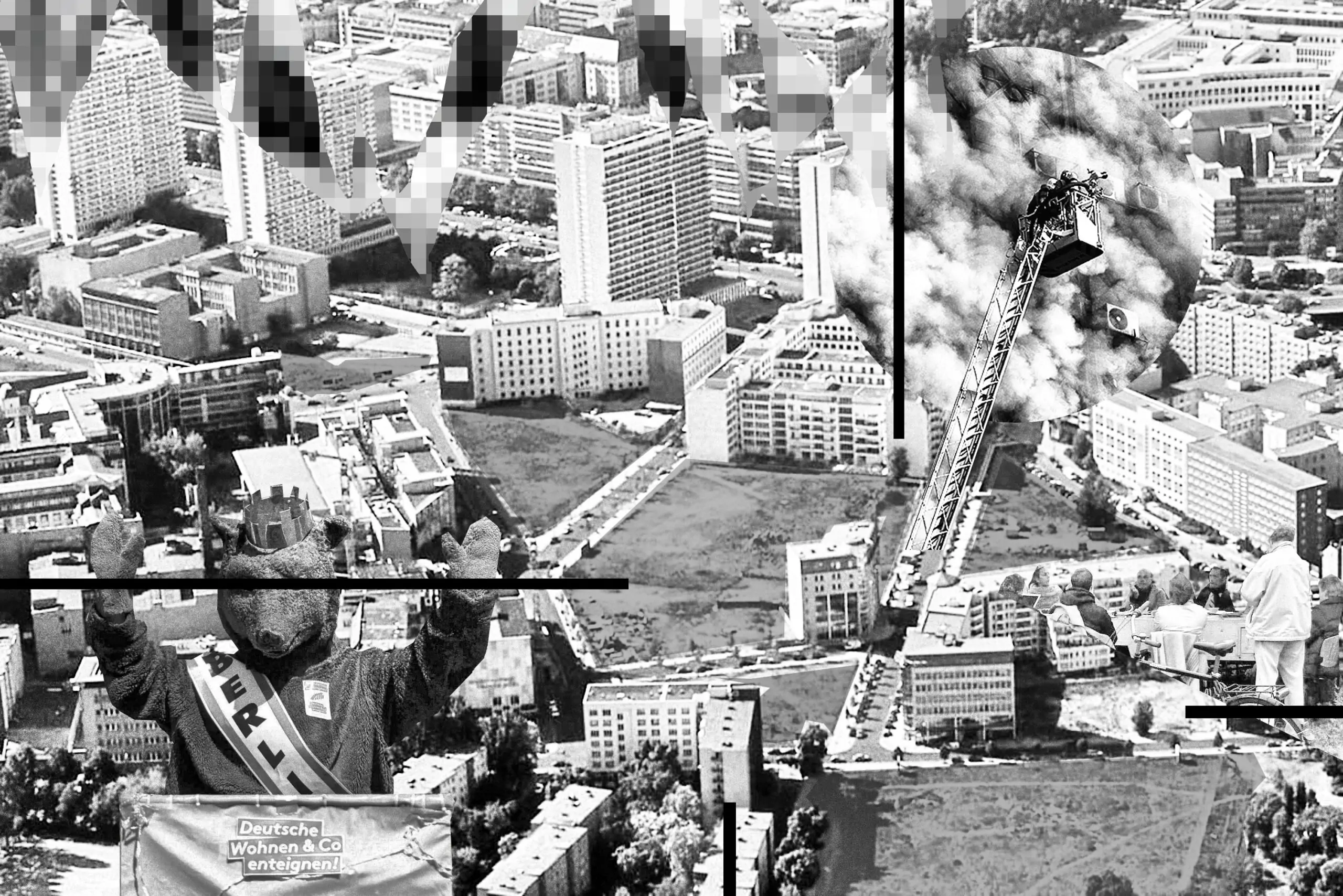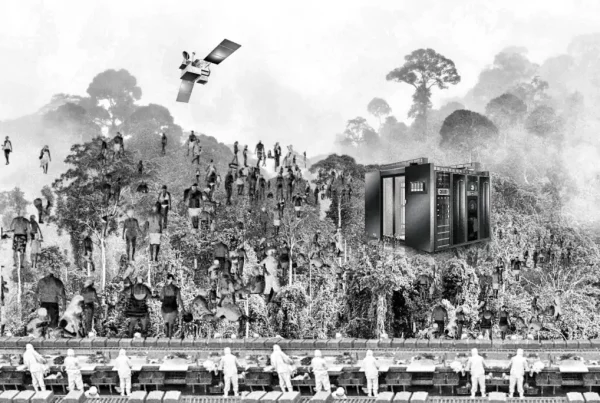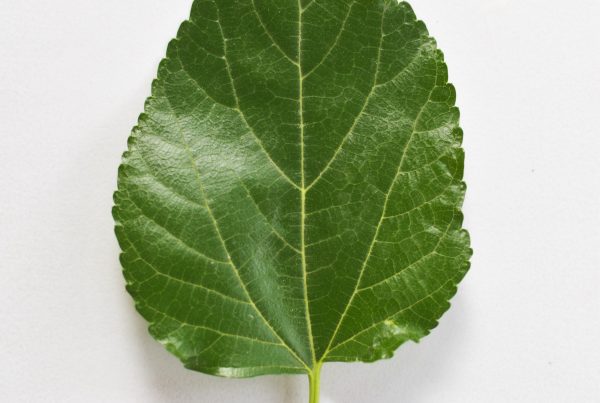Peak Soil: Why the Climate Crisis Urges Us to Reinvent the Politics of Space
The COVID-19 pandemic-related crisis surge, along with rising rents on the real estate market, has led to a rapid increase in the number of homeless people facing extreme weather conditions such as heat waves. It’s high time to reflect on the land and housing issue, as Ela Kagel argues in her contribution to the BG text series “After Extractivism,” focusing on the case of Berlin.
When we recount Berlin’s more recent history, at essence it is always about the progressive devouring of open spaces. Where “creative Berlin” once arose, in wastelands and ruins, in the no man’s land between East and West, inner-city investment projects such as Wasserstadt Mitte or Mediaspree now compete for the attention of the better-off.
In 2006, the artist collective KUNSTrePUBLIK began using a five-hectare abandoned wasteland between Mitte and Kreuzberg as the “Skulpturenpark Berlin_Zentrum” for art projects and public actions that are the stuff of legend. The project lasted four years – until sales to investors and extensive building works made further use impossible.
About ten years later, in 2021, the curatorial team returned with the project “RE:TURN” to the former sculpture park, which is now entirely built up. The last undeveloped parcel of the site remains in our memory, grotesquely small, a plot of land shaped like a tube in a ravine of adjacent new buildings. Grass still stood tall on the lot; a few trees provided shade, and there was an impromptu bar where guests grew nostalgic thinking about the fact that here too, on the smallest of plots, the excavators would soon be moving in. The next million-dollar investor’s dream had already appropriated the site.
Soil ethics
In his famous collection of essays, “A Sand County Almanac” (1949), ecologist Aldo Leopold describes an ethic of soil protection, which he summarizes as follows: “A thing is right when it tends to preserve the integrity, stability, and beauty of the biotic community. It is wrong when it tends otherwise.” Leopold calls for seeing the land we live on as a community project, something which should be protected and preserved. Thought of in this way, the project is intended to become the starting point for a caring relationship between people and the land.
The way we think about land ownership, however, is usually exclusively economic. The owners of the individual plots of land in the former sculpture park also acted according to this logic. None of them decided to consciously preserve their land as a natural open space in the city; instead, they all sold to the highest-bidding real estate investors. Wouldn’t they otherwise be declared crazy? Who would simply grow tomatoes on a plot of land in Berlin-Mitte?
From the political side, it’s definite that not enough is being done to prevent the rapid advance of speculation with the land of our city. One can indeed notice a certain upswing in private-public partnerships, model projects, and a rhetoric of good will. Ultimately, however, state policy has hardly any means at its disposal to halt the “rent madness.” Thus, truly radical approaches that can lead to long-term redistribution of land or unsealing of soil cannot be implemented politically. The pressure of the real estate lobby, the power of money and the intertwined web of interests are too great.
The city as community property
There are a few initiatives in Berlin that have succeeded in an impressive way in challenging the power of money and strengthening new patterns of thinking and acting. One of them is “Deutsche Wohnen & Co. Enteignen,” a citizens’ initiative in Berlin that successfully initiated a referendum on the expropriation and socialization of private housing companies. This means that the majority of Berlin’s citizens voted in favor of expropriating private profit-oriented real estate companies that own more than 3,000 apartments in Berlin, and transferring them to community ownership.
That such a thing was even possible in the election summer of 2021 was due in no small part to the fact that, in the midst of the COVID-19 pandemic, the housing crisis had reached a new peak: rents have more than doubled in Berlin in the past ten years, while wages have risen only marginally in the same period. The rent cap was talked out of existence by the influential real estate companies before the election and eventually overturned by the Constitutional Court. This created the basis for a social dialogue in which socialization and expropriation were publicly discussed.

In addition, other exciting projects have arisen in Berlin that aim to permanently secure the city’s land for the community: The Stadtbodenstiftung, for example, sees itself as an “offer to urban society to get involved: initiate projects, strengthen neighborhoods, set perceptible signs of solidarity-based urban development by mobilizing resources on a broad basis.” Following the example of the community “Land Trusts,” the “Stadtbodenstiftung” wants to buy land in Berlin, or accept it as a donation or inheritance, in order to permanently remove the land from real estate speculation and ensure management oriented toward the common good.
Here, too, the focus is on the idea of a community whose rules and social protocols are not so easy to learn or define. Although urban land actually belongs to all citizens, most of us do not necessarily live in this awareness. On the contrary, the daily struggle for survival in a city in which the spiral of gentrification keeps turning not only tires people out, but usually makes them lonely. Often enough, there is simply a lack of time and money for social participation. After all, you have to be able to afford activism somehow, at least in terms of time. Thus, for many, the dream of community ownership remains just as much of a utopia as purchasing a private property.
Therein lies an important message for all community projects, be it alternative housing, community gardens, or open spaces for children and youth: Unless those who are socially marginalized are included in the thinking and funding, these projects will not be able to have a sustainable impact. The key is to develop principles of solidarity that are incorporated into the DNA of these projects. Something along the lines of what Stadtbodenstiftung postulates for itself: “To the solidarity-based city via the soil.”
Hunger for soil
“Property entails obligations. Its use shall also serve the public good.” That’s what the Basic Law says. At the same time, however, the fundamental right also protects the foundations of enabling people to shape their own lives and the free market economy. If we look at the insatiable hunger for land in a city like Berlin, we see the conflict of interests in this legal framework. And then there are other interesting details, such as the fact that it is no problem to own 3,000 apartments in Germany and remain completely anonymous.
Christian Trautvetter heads the Rosa Luxemburg Foundation’s “Who owns the city?” project. In the publication “Wem die Stadt gehört geht uns alle was an” (“Who the city belongs to is everyone’s business”), he describes how anonymous real estate ownership could be brought to an end. It is fascinating to read how easy it would be to call for the social responsibility of real estate ownership that is enshrined in the German constitution if only all the parties involved wanted to. By way of comparison, land registers are open to public inspection in neighboring European countries.
If we take a closer look at the “right to housing” enshrined in Article 11 of the International Covenant on Economic, Social and Cultural Rights (UN Social Covenant), it becomes clear that the concepts of adequate housing go far beyond what is reality for many people today. For example, there is talk of “non-discriminatory access to housing” and “cultural adequacy.” When you read this article, it quickly becomes clear that these days we are lagging far behind the standards we once set for ourselves.
Housing crisis meets climate catastrophe
The discussion about standards takes on a new dimension in light of the climate crisis: Who will want to invest in a city that simmers from the heat in the summer? Where large areas of sealed concrete and dense development prevent any cooling?
Apocalyptic scenarios are already a tangible reality today, as Tomasz Konicz shows in his contribution to the “After Extractivism” text series. It can hardly be assumed that anything will improve here by itself. Already today, not even half of all Berlin’s trees are “healthy,” as the Street Tree Condition Report of 2020 vividly shows. And the development is dramatic: while in 2015 a total of around 52% of the trees examined were classified as not damaged, the figure for 2020 is only around 44%.
While, on the one hand, urban ecosystems have reached the stress limit, new construction sites are being opened up and new areas sealed every day. And this despite the fact that, at the latest since the UN Climate Report from April this year, it ought to be clear to everyone that we have to take countermeasures “now or never.”
Soil is not only the basis of life and habitat for humans, animals and plants. The soil on which we live is the foundation on which we build our communities: our homes, our infrastructures, our social relationships. The Soil Protection Act of the Federal Republic of Germany has been in force for 23 years; it is intended to sustainably secure and restore the functions of the soil. Thus far, this law does not seem to have any noticeable effect, although it would be so urgently necessary.
The concept “Peak Soil,” developed by eco-activists, describes on the basis of scientific facts that mankind has by now passed the peak of the exploitation of the world’s soil. It is difficult to end this article with such a statement. What else can one write about this? To whom should one actually address warnings or make demands, except to oneself?
Let’s return to the beginning of this text, where we talk about the owners of the plots in the sculpture park back then. At that time, just ten years ago, sale of the land seemed to everyone the only compelling logic. I wonder: how would it be today? Supposing the unlikely case that there were still private persons today who owned larger areas of undeveloped land in the center of Berlin, and who now in particular, in the historically hot month of July in 2022, noticed how essential such a fresh air corridor is in the city today.
Would they still sell it today to the highest bidders? Or would they deliberately hold back the land as a refuge, knowing that the value of the future city will possibly be measured not on the basis of its “concrete gold,” but on that of its natural areas?
Text by Ela Kagel
Editor’s note: This text is a contribution to the Berliner Gazette’s “After Extractivism” text series; its German version is available here. You can find more contents on the English-language “After Extractivism” website. Have a look here: https://after-extractivism.berlinergazette.de




